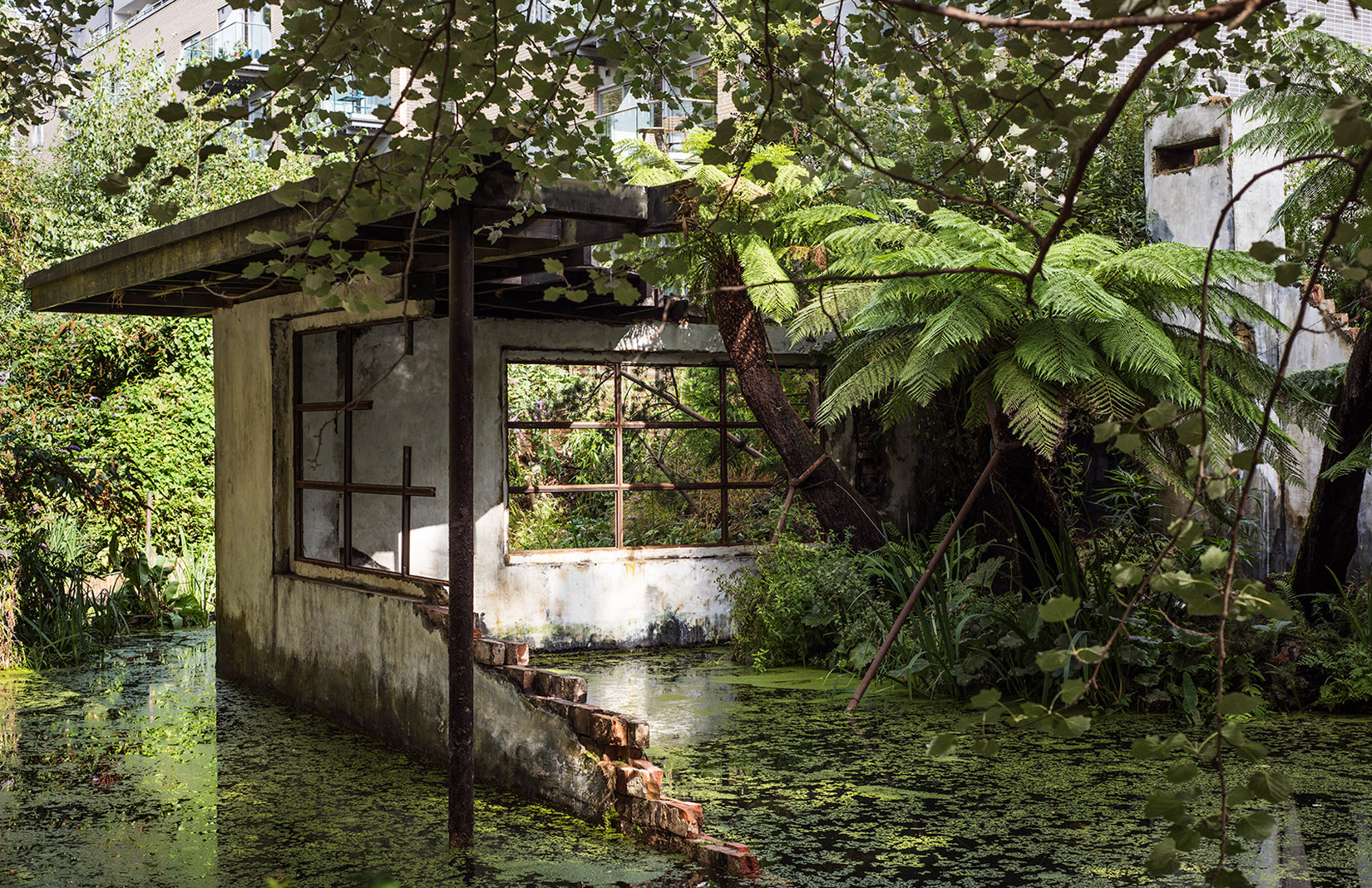Wedged into the bank of Victoria Miro Gallery’s waterside garden in London, artist Alex Hartley’s architectural intervention ‘A Gentle Collapsing’ looks like it’s been there for eons.
The structure borrows ideas from Modernist architecture – open plan interiors, clean and horizontal lines – which Hartley has left vulnerable to the elements. His sculpture is shrouded in the pond’s jungle-like foliage.
‘It’s been quite a strange work to make because it sits so well with the planting that some people think it was always there,’ says Hartley. ‘The gallery has to explain what was pre-existing and what wasn’t.’
The faux-historical structure is a preview of Hartley’s show at the gallery, After You Left, which opens this weekend and reimagines Los Angeles’ iconic Modernist abodes as the ‘ruins of the future’.
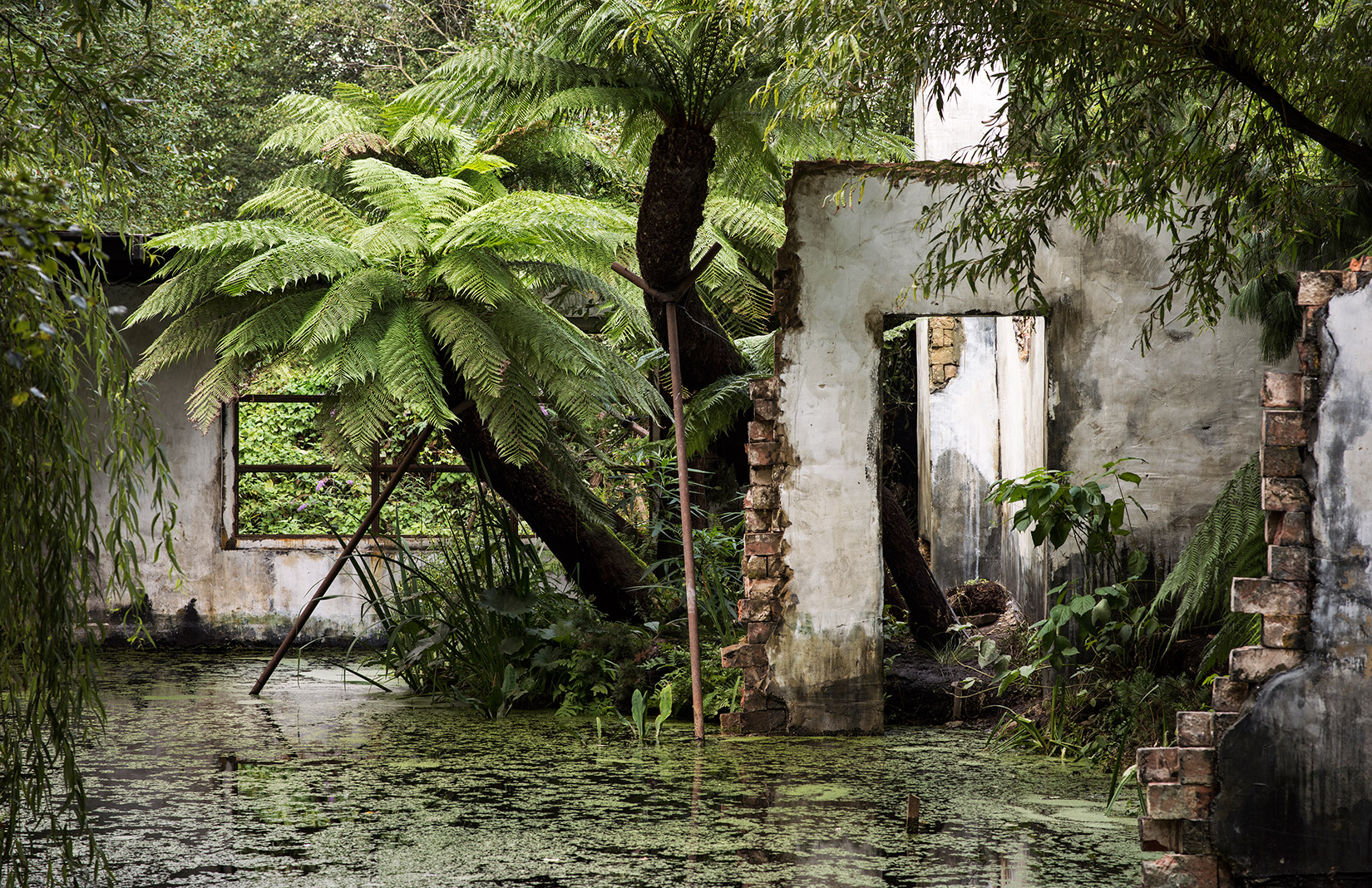
Blurring architectural elements with sculpture and photography, the show explores the battle between the manmade world and the natural environment. We caught up with Hartley to discover what fascinates him about this eternal struggle.
‘A Gentle Collapsing II’ is part a string of pavilions you’ve created. How did the series begin and how it has developed?
Alex Hartley: I was commissioned by a collector in Kentucky and we started talking about making a building for his land – my proposal was to make a Modernist ruin. I was interested in the idea of the folly, and also in what these Modernist buildings might look like in the future.
The first one [in Kentucky] is a big, galvanised steel structure which stands where it is. I decided I wanted to make a series of them, which led me to think about how they might work together.
They’re informed by site visits and what would fit within the landscape. [‘A Gentle Collapsing II’] is like that too: its shape and structure is born by the landscape it’s built on. I lived on the canal for a while during the last show [in 2011], and since then the pond has been redone and given a jungle feel, which helped with making the structure.
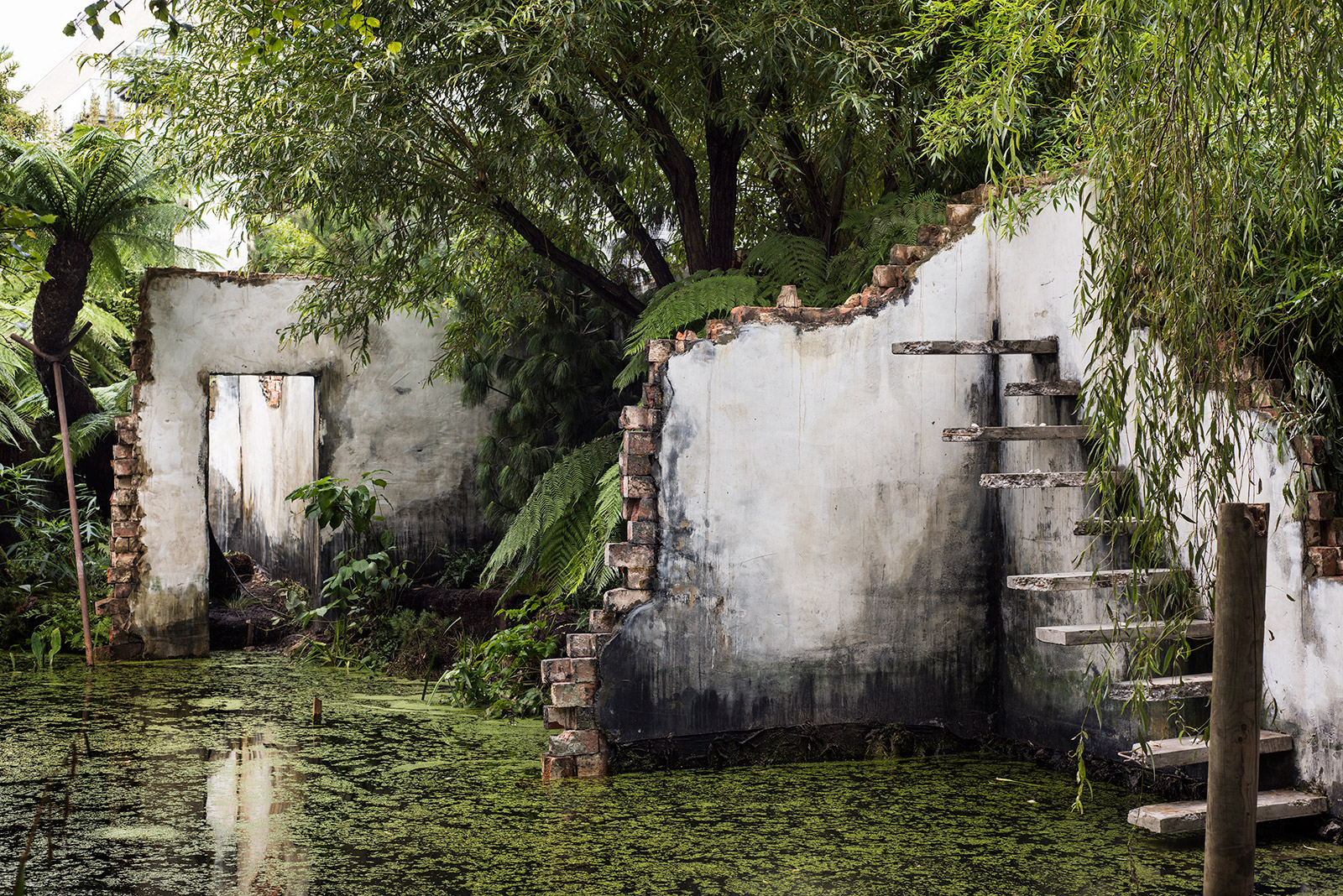
The installation features elements of Modernist architecture. Why is it decaying?
It was interesting thinking about what makes up a Modernist building – the horizontality of the staircase, a column, for example. They are very small indicators that involve you in the language of architecture. When these buildings are in decay, their narrative changes.
We associate ruins with a different era, and I like the narrative that comes with a ruin – it makes you ask questions about what has happened. It comes with an openness. The whole show at Miro focuses on what will happen to these places in the future if they’re not maintained. I like the idea of the present order as the disorder of the future.
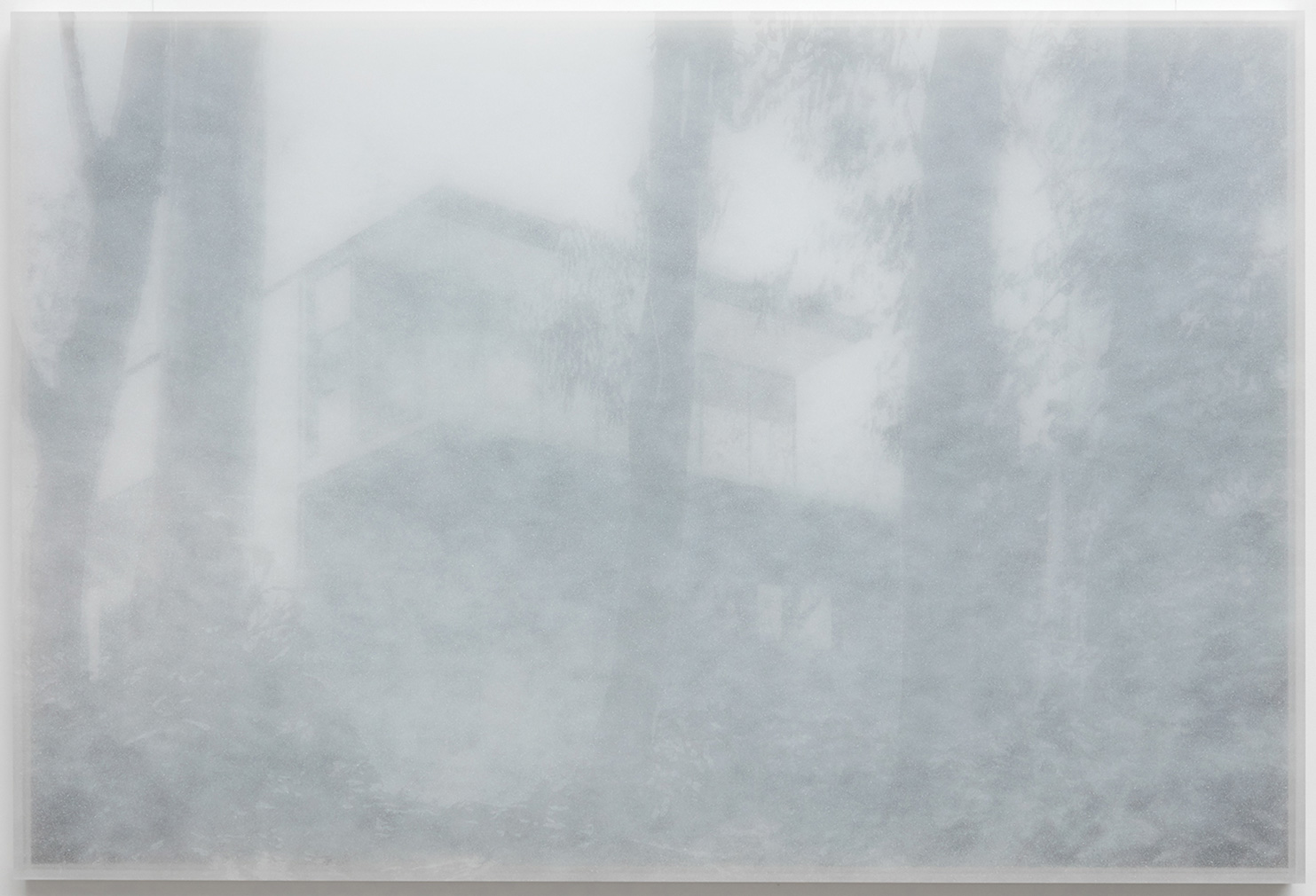
Your earlier works focused on the ‘white cube’ of the gallery space. How has this interest evolved?
The early works I made were about the power of architectural space; the way that, when they took the frame off paintings, the architecture of the gallery became the frame. I did a lot of work with empty galleries. Now I’m focusing on the battle between architecture and nature.
‘A Gentle Collapsing II’ is way more theatrical than anything I’ve ever made.
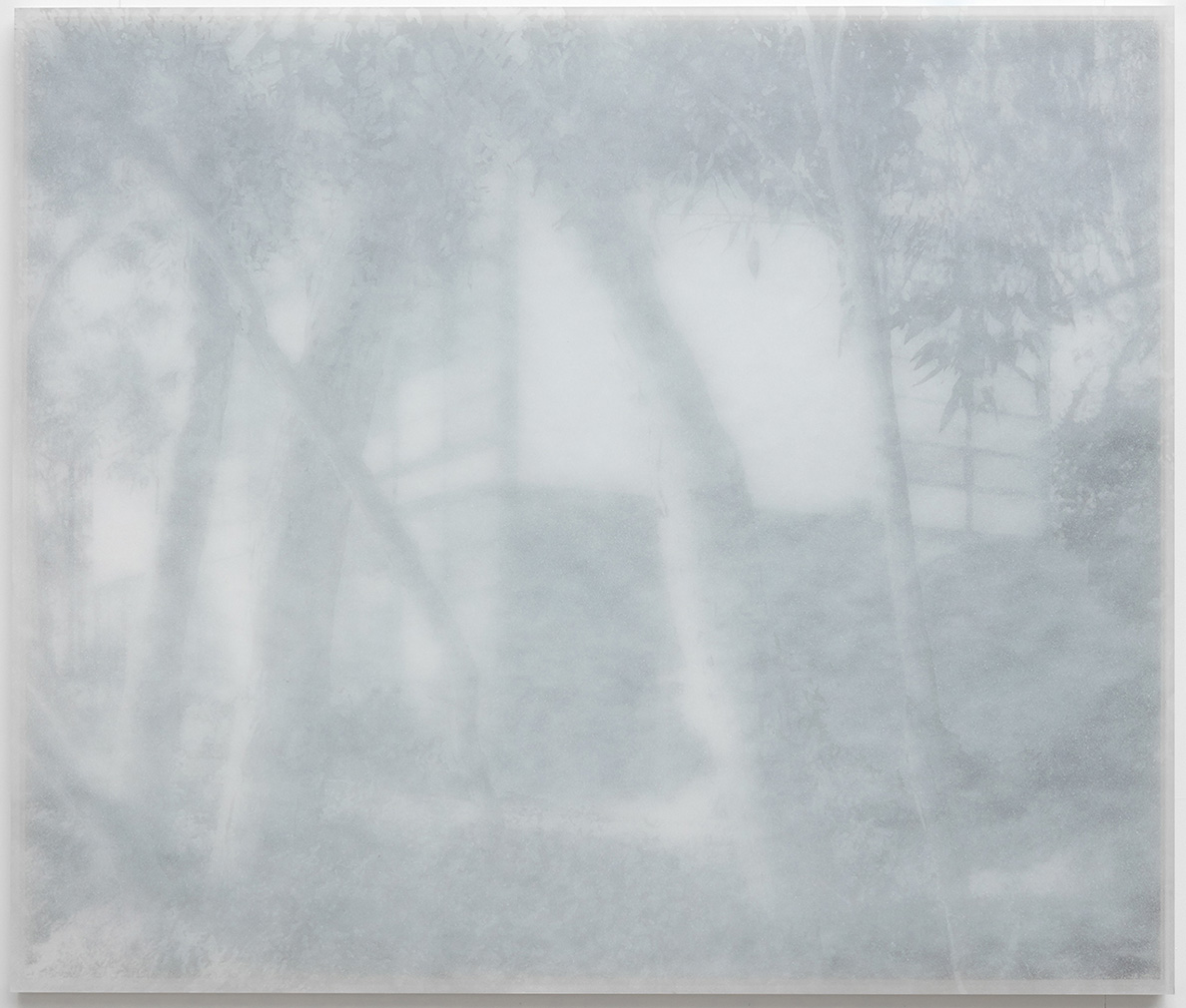
The full show, After You Left, includes a series of wall-based works. How are they involved in this battle between architecture and nature?
The works in the show are all iconic residential architecture from Los Angeles, by architects like Richard Neutra and Charles and Ray Eames. They’re all taken through foliage, because when I went around with my architectural guidebook, I was prevented from getting in to see them by walls, fences and foliage. I actually ended up crawling through the foliage to get to the buildings. They’re not abandoned, but I photographed them in a way that makes them look like they’re falling back into nature. The balance between the building and nature is being upset, and that’s something I’m quite interested in.
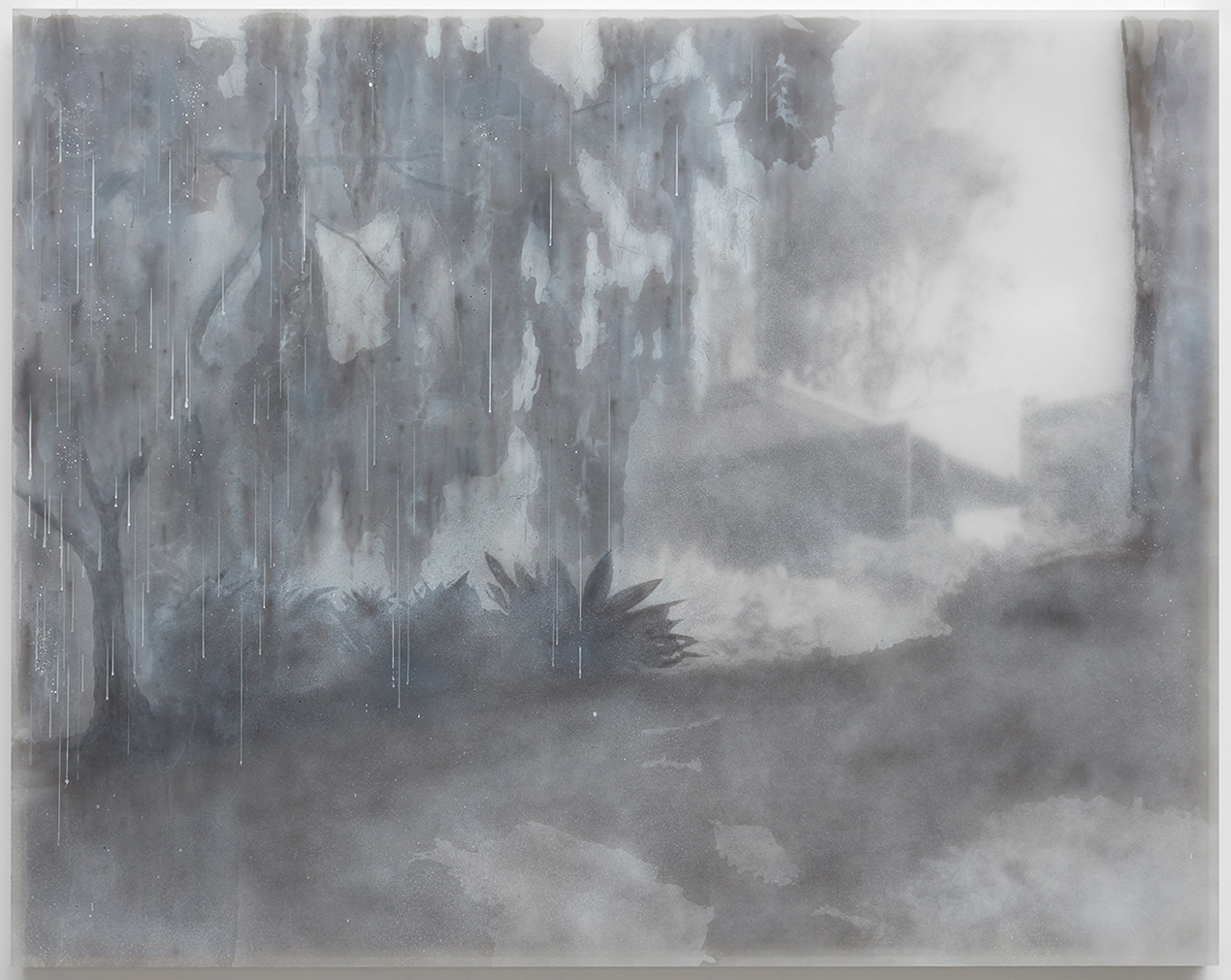
Modernist architecture’s vulnerability is quite important too. In order to have big, open windows that allow the outside to become part of the building, you have to defend a different border. The privacy extends beyond the building, so that you can live both inside and outside of it. This also means that the buildings have a very interesting relationship with nature – in these photographs, the buildings are decaying, they seem to be being overtaken by nature.
After you Left runs at Victoria Miro Gallery in London from 19 November until 16 December
Read next: Urban explorer James Kerwin shoots Europe’s forgotten buildings




